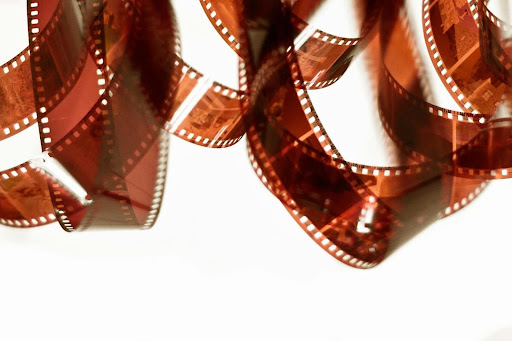Negatives are a treasure trove of memories, capturing life’s most precious moments in their raw, untouched form. But, like all physical media, negatives are prone to damage, fading, and the inevitable effects of time. If those tiny strips of film hold cherished memories, it’s time to consider preserving them for the future. That’s where negative scanning services come into play. Let’s dive into everything you need to know about scanning negatives.
Table of Contents
Why Should You Scan Negatives?
Negatives are delicate. The emulsion layer, which holds the image, can deteriorate over time due to environmental factors like heat, humidity, and light exposure. Scanning your negatives transforms these fragile film strips into durable digital files, ensuring they last forever. Digitized negatives are easier to access, edit, and share, making them more versatile than their physical counterparts. Don’t let your memories fade—preserve them before it’s too late.
The Benefits of Negative Scanning
Using a professional negative scanning service offers several advantages. Firstly, it enhances the quality of your images. Scanning negatives can often yield better results than scanning printed photos because negatives capture more detail. Secondly, digital files allow you to back up your memories across multiple devices, keeping them safe from loss or damage. Lastly, digitized negatives are incredibly convenient—they’re easy to organize, share, and print at any size.
How Does Negative Scanning Work?
Scanning negatives involves specialized equipment that reads the images stored on the film. High-resolution scanners shine light through the negatives and capture the image digitally. Professional services use advanced scanners that ensure the highest quality, capturing every detail, color, and texture. Once scanned, the images are processed to remove dust, scratches, or other imperfections, giving your photos a fresh, polished look.
Types of Negatives That Can Be Scanned
Not all negatives are the same. Different film formats require different handling during scanning. Common types include 35mm negatives, medium-format negatives, and large-format negatives. Each has its unique size and level of detail. A reliable negative scanning service will be equipped to handle various film types, ensuring every frame is digitized with precision and care, regardless of its format or age.
Choosing Between DIY and Professional Services
While it’s tempting to try scanning negatives at home, the results often fall short. Consumer-grade scanners may not capture the same level of detail as professional equipment. Additionally, the process is time-consuming, especially if you have a large collection. On the other hand, professional negative scanning services use advanced technology to deliver superior results. They also save you time and ensure your negatives are handled with expertise and care.
Factors to Consider When Hiring a Service
Choosing the right service provider is key to ensuring high-quality results. Look for a company with experience in handling negatives, especially if you have older or fragile films. Check reviews and ask about their equipment—high-resolution scanners and advanced color correction are essential. Pricing is another factor to consider, but don’t compromise quality for cost. A trusted service will prioritize preserving your memories with the utmost care.
The Importance of Resolution
Resolution plays a crucial role in scanning negatives. Higher resolution means greater detail and the ability to enlarge images without losing quality. Professional services often offer customizable resolution settings, depending on your needs. For archival purposes or large prints, opt for high-resolution scans. This ensures that every detail of your image is preserved, allowing for flexibility in how you use your digital files in the future.
Restoring Old Negatives
One of the standout benefits of scanning negatives is the opportunity for restoration. Many old negatives suffer from scratches, discoloration, or fading. Professional scanning services include image restoration options, such as dust and scratch removal or color correction. This process breathes new life into your images, transforming old or damaged negatives into crisp, vibrant digital files that look as good as—or even better than—the originals.
Organizing Your Scanned Files
Once your negatives are scanned, organization is key. A good service will deliver your files in a structured format, with clear file names and folders. This makes it easy to locate specific images and categorize them by date, event, or subject. Additionally, digital files can be backed up on cloud services or external drives, ensuring your collection is safe, accessible, and neatly stored for future generations.
Printing and Sharing Digitized Negatives
Digitized negatives offer endless possibilities for printing and sharing. Want to create a photo album or frame a cherished memory? High-resolution scans make printing your images in various sizes easy without sacrificing quality. Sharing is also a breeze—emailing photos, uploading them to social media, or creating digital slideshows for family and friends. With scanned negatives, your memories can reach new audiences and bring joy to others.
Preserving Family History
Negatives often hold priceless family moments that span generations. Scanning them isn’t just about preserving images—it’s about keeping family stories alive. By digitizing your negatives, you create a visual history that can be shared and passed down to future generations. Professional scanning services ensure these moments are captured in full glory, safeguarding your family legacy for years to come.
The Cost of Scanning Negatives
While the cost of scanning negatives varies depending on the service and the number of negatives, it’s a worthwhile investment. Think of it as a way to protect irreplaceable memories. Many providers offer bulk pricing or package deals, making it affordable to digitize larger collections. The peace of mind and convenience that comes with having your negatives preserved digitally far outweigh the cost.
Conclusion:
negatives hold a wealth of memories that deserve to be preserved and celebrated. With the help of a reliable negative scanning service, you can transform these fragile film strips into accessible, high-quality digital files. From enhanced image quality to easy sharing and restoration, the benefits are endless. Don’t let your memories sit forgotten in a box—digitize them today and ensure they’re safe for future generations.
Whether it’s your first time scanning negatives or you’re looking to upgrade your existing collection, investing in negative scanning services is the perfect way to honor your past while embracing the future. Start preserving your memories today.










